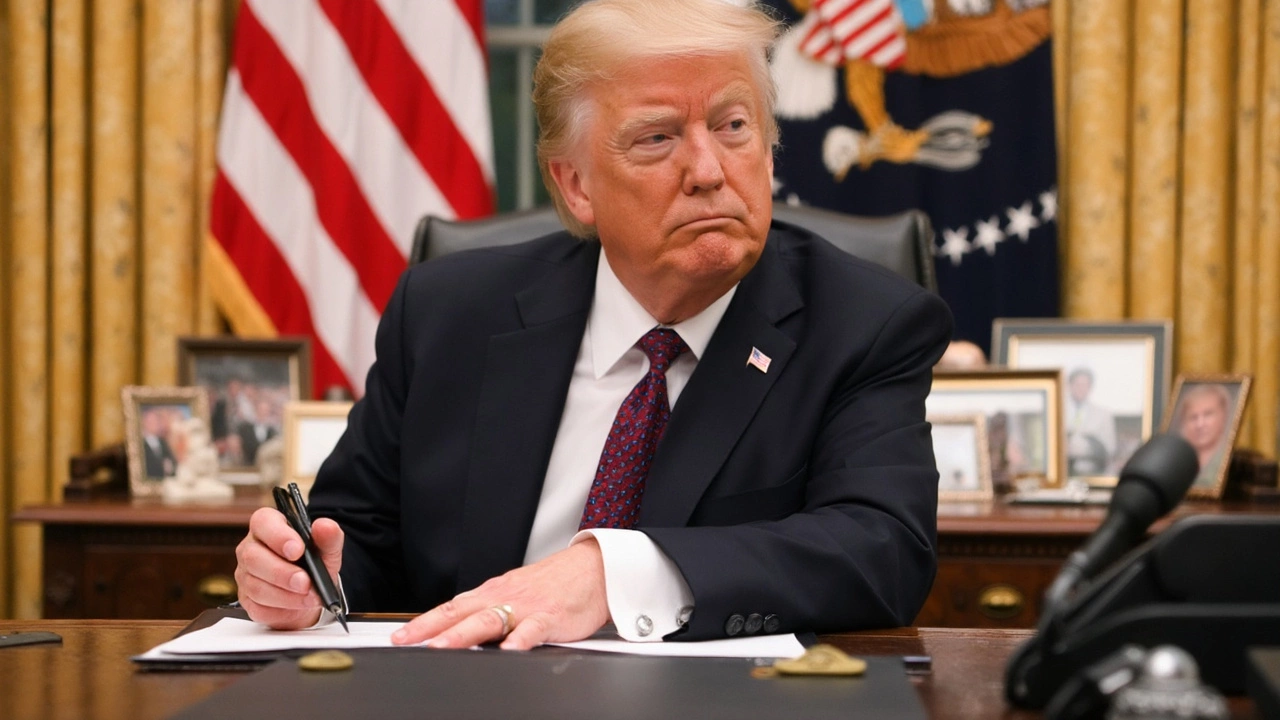Trump Targets Fentanyl Crisis with Sweeping Tariffs
President Donald Trump has opted for tariffs—big ones—to try to tackle the fentanyl epidemic and curb illegal immigration. In a move that shocked both economic analysts and diplomats, Trump snapped a 25% tariff on most imports from Mexico and Canada, carving out a smaller 10% rate on Canadian energy. On top of that, he hiked duties on Chinese goods to a total of 20%. It’s an aggressive play, and he’s using powers granted under the International Emergency Economic Powers Act, framing the situation as a national emergency with drugs and border issues at the core.
What’s driving all this? Trump holds Mexico and Canada responsible for not doing enough to fight drug trafficking, especially the flow of fentanyl, a synthetic opioid linked to thousands of overdose deaths each year in the U.S. He hasn’t held back with accusations, blaming Mexican authorities for turning a blind eye to cartels pumping out fentanyl and pointing fingers at Canada for labs that actually synthesize the stuff before it moves south and eventually over the U.S. border. The message: step up your efforts, or face the economic heat.
But he hasn’t spared China either. While China doesn’t export fentanyl directly anymore due to previous crackdowns, Trump argues that Chinese chemical companies keep sending the ingredients—precursor chemicals—needed for Mexican cartels to manufacture fentanyl at scale. The latest 10% tariff on Chinese imports is meant to pressure Beijing into enforcing tighter controls.

International Fallout and Unsettled Negotiations
Not everyone’s taking the blame lying down. China’s Foreign Ministry has completely rejected the idea that the fentanyl crisis is their fault. Spokesperson Lin Jian has called Trump’s new tariffs “misguided” and framed the opioid epidemic as a uniquely American issue that U.S. policy should address directly. China even hinted at counter-tariffs and made it clear they’re not about to roll over.
Mexico and Canada, for their part, have pushed back just as firmly. After Trump dismissed their recent counter-narcotics strategies as simply not good enough (publicly, on March 4, 2025), leaders in both countries warned that the new tariffs risk damaging established partnerships and could even undermine cross-border anti-drug operations. There’s a real risk here: when allies start fighting economically, it becomes that much harder to share information or cooperate against the traffickers who, frankly, know how to exploit every rift.
Meanwhile, things on the China-U.S. trade front are complicated. Although a May 2025 trade agreement seemed to cool things off by dropping a few tariffs, the new fentanyl-focused duties keep the relationship tense. U.S. negotiators Scott Bessent, the Treasury Secretary, and Jamieson Greer, the Trade Representative, are still stuck in talks with China’s Vice Premier He Lifeng—no quick fixes in sight. And experts are warning these tit-for-tat measures could hit American consumers with higher prices on everyday goods, just when inflation was starting to cool.
- A 25% tariff on most goods from Mexico and Canada could drive up prices on everything from cars to groceries.
- The 10% tariff on China means electronics and apparel costs are likely to climb too.
- Diplomatic experts say strained relations may make anti-fentanyl work even harder, with cartels benefitting from cross-border bickering.
The Trump tariffs don’t just make headlines—they’re shaping how three of America’s biggest trading partners deal with drug trafficking, global trade, and each other. Everyone’s watching to see if pressure triggers progress, or if the costs hit American wallets before any breakthroughs in the fight against fentanyl really happen.
